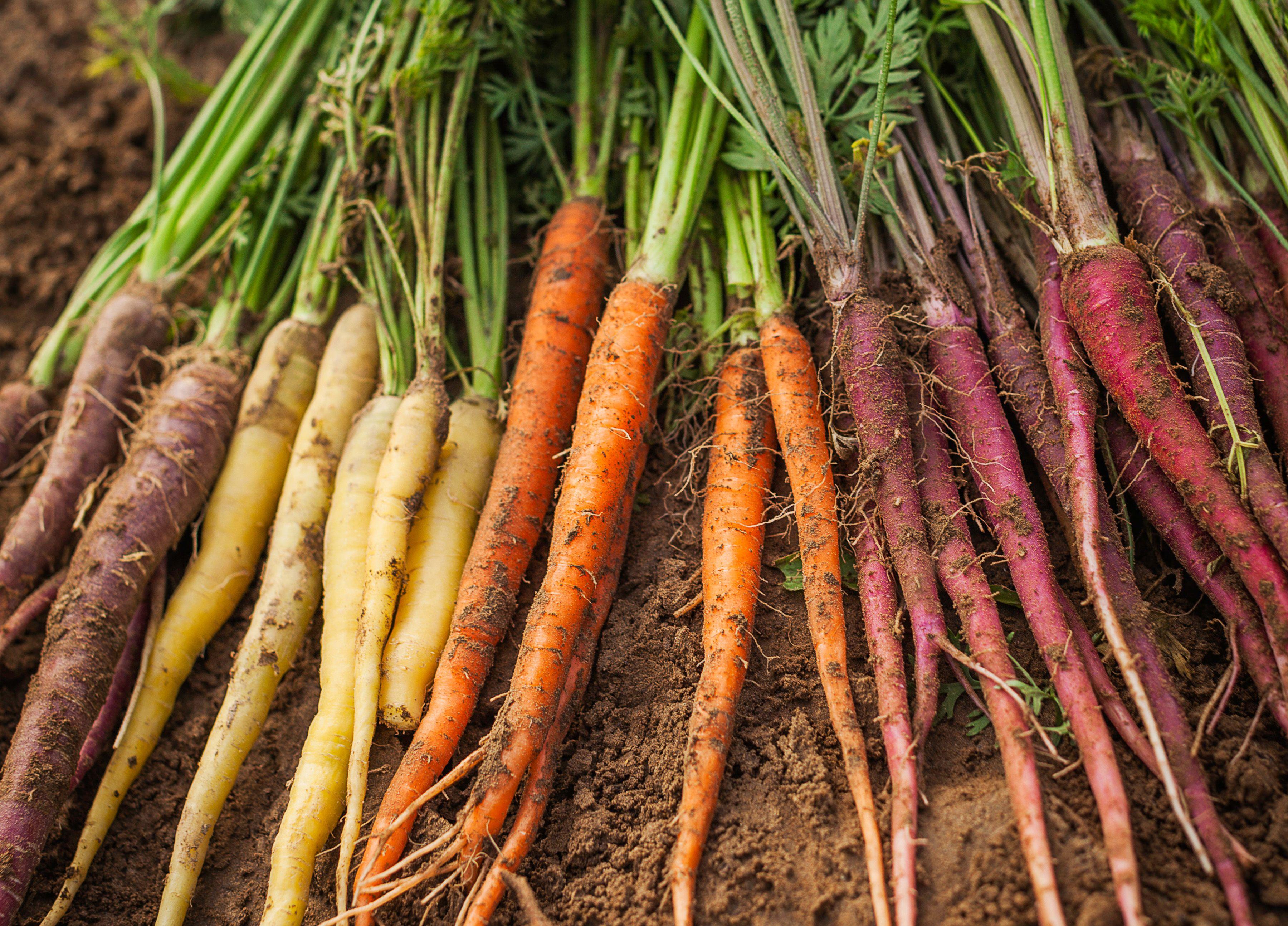Key Takeaways
- Heat stress, lack of water or nutrients, and overcrowding cause thin carrots.
- For larger carrots, plant them in the spring or fall in full sun and rich soil with proper spacing.
- Weed, water, and fertilize regularly, and harvest when carrots are ¾ inch in diameter.
Carrots, being a root vegetable, are unpredictable; you never quite know what they look like until you dig them up. Sometimes, the carrots you pull are disappointing—thin, almost thread-like, or otherwise unimpressive. Thankfully, there are several ways to improve your harvest. From spacing issues to improper watering, here are some of the most common causes of thin carrot roots and simple solutions for growing bigger carrots.
What Causes Thin Carrot Roots?
Carrots range in size from petite, 2-inch-long mini carrots that are ideal for container growing, to large storage carrots that stretch over 12 inches in length. No matter the variety, carrots should generally be at least ¾ inch in diameter when you harvest them. If your carrot roots are thinner than the standard, some of the most likely causes include:
- Harvesting too early
- Temperature stress
- Improper watering
- Nutrient-poor soil
- Overcrowding
Related
How to Grow Bigger Carrots
Thin carrot roots may get bigger if you give them more time to grow, or correct the issues that are causing them to stay small. But sometimes the best solution is to pull up undersized harvests and start fresh with a new batch of seeds.
Whether carrots are growing in your garden already or you’re just about to plant fresh carrot seed and want to harvest tasty, plump roots, here's how to ensure you grow big and healthy carrots every time.
Plant at the Right Time
The best time to plant carrots is in spring as soon as the soil is workable, or in late summer for an autumn harvest. Carrots grow best when temperatures range between 55-75°F and can be succession planted every two to three weeks through spring.
Stop planting new crops of carrots during the peak of summer heat, as temperature stress causes carrots to develop undersized roots.
Provide Plenty of Sun
Compared to most other garden crops, carrots are relatively flexible about their lighting needs and grow in either full or part sun locations. Just make sure your plants receive at least 6 hours of direct sun per day (6 to 8 hours is ideal). Less than 6 hours of sunlight causes carrots to grow more slowly and develop thinner roots.
Enrich the Soil
Carrots grow best in rich, loose, and well-draining soil with a fair amount of sand and a slightly acidic pH. Testing your soil and amending the soil with a few inches of compost before planting carrot seeds will help carrots grow better and produce larger roots.
If you’re dealing with rocky, dense, or heavy clay soil, loosen and amend the soil with compost to a depth of 12 inches, or grow carrots in 12-inch deep raised beds or pots filled with rich, loose soil or potting mix.
Follow Spacing Guidelines
One of the most common reasons why carrots develop thin roots is that they were planted too closely together and don’t have the space or nutrients they need to thrive. To avoid this, plant carrot seeds ¼ inch deep in rows spaced about 12 to 18 inches apart. Once the carrots sprout and their tops are 1 to 2 inches high, thin out the weakest seedlings with scissors so that the remaining plants are spaced 3 inches apart.
Because carrot seeds are tiny, which makes proper spacing challenging, seed companies also sell pelleted carrots. While they cost more than ordinary seeds, you can sow them more precisely, so you need fewer seeds and less thinning out later.
Fertilize Right
Amending the soil with compost before planting carrots will help fuel the growth of your crops. But carrots will typically grow bigger and better if you also fertilize them regularly, starting about two to three weeks after the carrot tops emerge from the soil.
When you fertilize, use a balanced (10-10-10) or low-nitrogen fertilizer. Too much nitrogen causes carrots to grow lots of tops and thinner roots.
Water Well
Carrots need about 1 inch of water per week to grow well. Drip irrigation systems and soaker hoses tend to be the best way to water carrots, as these systems direct water straight into the soil and encourage carrot roots to grow deeper and bigger.
Adding a loose mulch, like straw, around your plants insulates the soil from heat and evaporation, and keeps carrots from becoming water-stressed and less productive.
Remove Weeds
Planting carrots too closely together leads to plant competition and reduces the size of carrot roots. But weeds can also compete with carrots for space, nutrients, and moisture, and cause carrot roots to thin. That’s why it’s important to stay on top of weeding and to remove weeds before they crowd out or overshadow your carrots.
Know When to Harvest
Most carrots are harvested about 50 to 75 days after planting. Check your seed packets carefully, as harvesting timelines can vary, depending on the cultivar. In general, carrots should be harvested when the tops of the roots or “shoulders” are at least ¾ inch in diameter.
If you’ve pulled up a test carrot and it’s thinner than you like, it may be a sign that your carrots aren’t quite ready to harvest and they need a little more time to grow.



